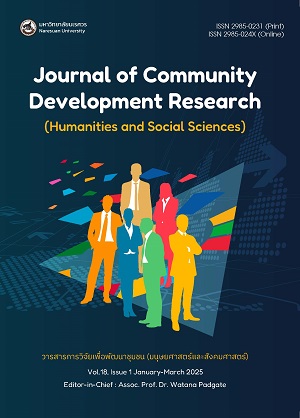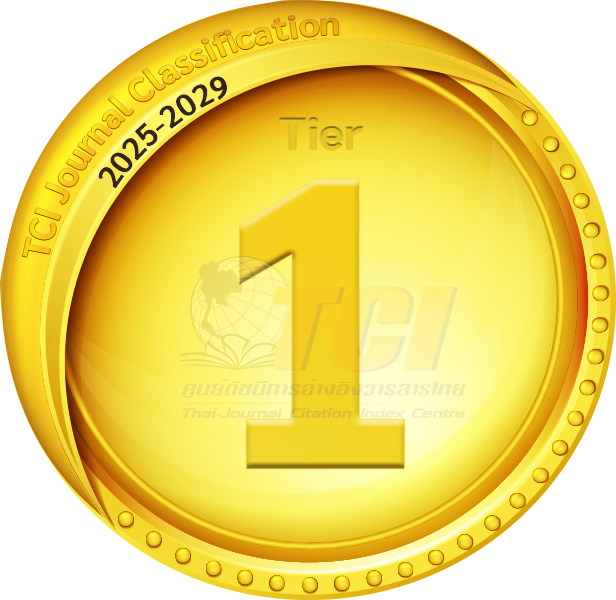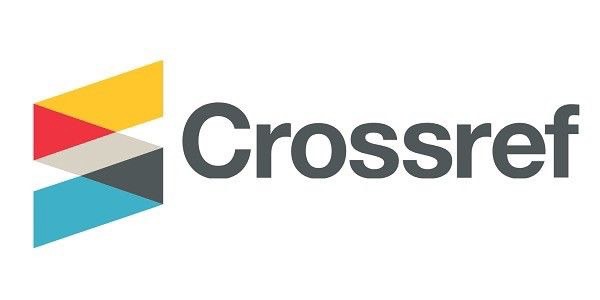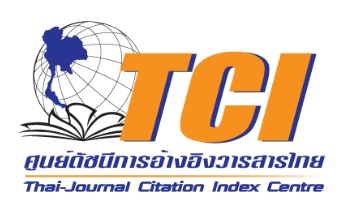The Role of Digital Technology Adoption on Competitive Advantage and Firm Performance: Evidence from Fruit and Vegetable Processing SMEs in Thailand
DOI:
https://doi.org/10.69650/jcdrhs.2025.748Keywords:
Entrepreneurial Orientation, Digital Intellectual Dynamics, Competitive Advantage, Firm Performance, SMEsAbstract
The objective of this study was to investigate the relationships between Entrepreneurial Orientation (EO) and Digital Intellectual Dynamics (DID) and their effects on Competitive Advantage (CA) and Firm Performance (FP) under the context of fruit and vegetables processing small and medium enterprises (SMEs) in Thailand. Specifically, this research seeks to answer four key questions: 1) How does an entrepreneurial mindset influence CA and FP?, 2) What role does digital technology play in enhancing CA and FP?, 3) How do the development and sustainability of CA contribute to long-term business success?, 4) What are the key factors influencing the FP of SMEs? A qualitative approach, utilizing semi-structured in-depth interviews, was employed with 10 participants, including one business owner, eight managers, and one department head. Stratified random samples ensured a representative sample from three industrial groups per the Standard Industrial Classification: 1) C103 - fruit and vegetable processing (four cases), 2) C104 - vegetable oil production (one case), and 3) C106 - grain and root plant-based manufacturing (five cases). Firms met inclusion criteria for business characteristics and digital technology adoption in Digital Human Dynamics (DHUM), Digital Social Dynamics (DSOC), and Digital Structure Dynamics (DSTR). Interviews were transcribed verbatim, analyzed via content analysis, and supported by NVIVO Software. Triangulation ensured validity. Ethical approval was obtained from Naresuan University (COA No. 083/2023).
The findings indicated that EO enhances DID, allowing entrepreneurs to better integrate digital technologies into operations, thereby improving supply chain management and market responsiveness. Both EO and DID contribute to strengthening CA, with digital solutions improving efficiency and stakeholder relationships. CA positively affected FP, as businesses that adopted digital tools and embraced adaptability were more successful in meeting customer needs and maintaining high product standards. Furthermore, EO and DID indirectly enhanced FP through CA, with key factors such as innovation, strategic alliances, and digital talent development playing a crucial role. Entrepreneurs should focus on proactiveness, leveraging digital tools and government policies for sustainable growth, while managing risks, encouraging innovation, and collaborating with competitors. In addition, promoting a culture of digital expertise, enhancing communication, and facilitating product sharing can strengthen competitiveness and improve overall performance.
References
Abdelkareem, R., Battour, M., & Al-Awlaqi, M. (2022). Entrepreneurial Orientation, Dynamic Capabilities, and Business Processes Performance: Evidence from Egyptian SMEs. https://doi.org/10.21203/rs.3.rs-1557654/v1
Ali, M. A., Hussin, N., Haddad, H., Alkhodary, D., & Marei, A. (2021). Dynamic Capabilities and their Impact on Intellectual Capital and Innovation Performance. Sustainability, 13(18), 10028. https://doi.org/10.3390/su131810028
Al-Mamary, Y. H., Alwaheeb, M. A., Alshammari, N. G. M., Abdulrab, M., Balhareth, H., & Soltane, H. B. (2020). The Effect of Entrepreneurial Orientation on Financial and Non-financial Performance in Saudi SMEs: A Review. Journal of Critical Reviews, 7(14), 200-208.
Aminu, M. I., & Mahmood, R. (2015). Mediating Role of Dynamic Capabilities on the Relationship between Intellectual Capital and Performance: A Hierarchical Component Model Perspective in PLS-SEM Path Modeling. Research Journal of Business Management, 9(3), 443-456. https://doi.org/10.3923/rjbm.2015.443.456
Anggadwita, G., Indarti, N., Sinha, P., & Manik, H. F. G. G. (2023). The Internationalization Performance of Indonesian SMEs During COVID-19 Pandemic: Exploring a Mediation Model. Review of International Business and Strategy, 33(5), 763-785. https://doi.org/10.1108/RIBS-04-2023-0030
Bangkok Bank. (2021, January 21). 5 Digital Technology Trends 2021. Retrieved from https://www.bangkokbanksme.com/en/digital-technology-trends-of-2021
Barney, J. (1991). Firm Resources and Sustained Competitive Advantage. Journal of Management, 17(1), 99-120. https://doi.org/10.1177/014920639101700108
Campos-Núñez, F., & Serrano-Malebrán, J. (2024). Enhancing Firm Performance: How Entrepreneurial Orientation and Information Technology Capability Interact. Applied Sciences, 14(16), 7243. https://doi.org/10.3390/app14167243
Charusreni, K. (2022). The Causal Factors Influencing the Success of a Medium-sized Restaurant Business in Bangkok. Journal of Management Science, Nakhon Pathom Rajabhat University, 9(2), 158-173. Retrieved from https://so03.tci-thaijo.org/index.php/JMSNPRU/article/view/265497
Clampit, J. A., Lorenz, M. P., Gamble, J. E., & Lee, J. (2022). Performance Stability Among Small and Medium-sized Enterprises During COVID-19: A Test of the Efficacy of Dynamic Capabilities. International Small Business Journal, 40(3), 403-419. https://doi.org/10.1177/02662426211033270
Cohen, L., Manion, L., & Morrison, K. (2017). Validity and Reliability. In Research Methods in Education (8th ed., pp. 245-284). London: Routledge. https://doi.org/10.4324/9781315456539-14
Dahana, R. N., Indrawati, N. K., & Mugiono, M. (2021). Competitive Advantage to Mediate the Influence of Product Innovation and Entrepreneurial Orientation on Marketing Performance in Small and Medium Industry. Journal of Applied Management, 19(2), 413-423. https://doi.org/10.21776/ub.jam.2021.019.02.17
Department of Business Development. (n.d.). DBD DataWarehouse+. Retrieved from https://datawarehouse.dbd.go.th/index
Department of International Trade Promotion. (2023). Export of Canned and Processed Fruits and Vegetables. Retrieved from https://ditp.go.th/contents_attach/961684/961684.pdf
Fan, M., Qalati, S. A., Khan, M. A. S., Shah, S. M. M., Ramzan, M., & Khan, R. S. (2021). Effects of Entrepreneurial Orientation on Social Media Adoption and SME Performance: The Moderating Role of Innovation Capabilities. PLoS ONE, 16(4), e0247320. https://doi.org/10.1371/journal.pone.0247320
Foster, B., Saputra, J., Johansyah, M. D., & Muhammad, Z. (2022). Do Intellectual Capital and Environmental Uncertainty Affect Firm Performance? A Mediating Role of Value Chain. Uncertain Supply Chain Management, 10(3), 1055-1064. https://doi.org/10.5267/j.uscm.2022.2.006
Galbreath, J., Lucianetti, L., Thomas, B., & Tisch, D. (2020). Entrepreneurial Orientation and Firm Performance in Italian Firms: The Moderating Role of Competitive Strategy. International Journal of Entrepreneurial Behavior & Research, 26(4), 629-646. https://doi.org/10.1108/IJEBR-07-2019-0457
Hermawan, S., Hariyanto, W., & Biduri, S. (2020). Intellectual Capital, Business Performance, and Competitive Advantage: An Empirical Study for the Pharmaceutical Companies. QUALITY Access to Success, 21(175), 103–106.
Hussain, A., Shahzad, A., & Hassan, R. (2020). Organizational and Environmental Factors with the Mediating Role of E-Commerce and SME Performance. Journal of Open Innovation: Technology, Market, and Complexity, 6(4), 196. https://doi.org/10.3390/joitmc6040196
Indriyani, E. P., Suhariadi, F., Lestari, Y. D., Aldhi, I. F., Rahmawati, E., Hardaningtyas, D., & Abbas, A. (2025). Sustaining Infrastructure Firm Performance Through Strategic Orientation: Competitive Advantage in Dynamic Environments. Sustainability, 17(3), 1194. https://doi.org/10.3390/su17031194
International Monetary Fund. (2025). World Economic Outlook Update, Global Growth: Divergent and Uncertain. Retrieved from https://www.imf.org/en/Publications/WEO/Issues/2025/01/17/world-economic-outlook-update-january-2025
Jemal, S. (2020). Effect of Entrepreneurial Mindset and Entrepreneurial Competence on Performance of Small and Medium Enterprise, Evidence from Litrature Review. International Journal of Management & Entrepreneurship Research, 2(7), 476-491. https://doi.org/10.51594/ijmer.v2i7.197
Kanaan-Jebna, A., Baharudin, A. S., & Alabdullah, T. T. Y. (2022). Entrepreneurial Orientation, Market Orientation, Managerial Accounting and Manufacturing SMEs Satisfaction. Journal of Accounting Science, 6(1), 1-7.
Kanchanda, K. (2022). Learning Orientation and Innovative Capabilities Affecting Performance of Companies Listed on the Stock Exchange of Thailand. Journal of Positive School Psychology, 6(8), 2058-2068. Retrieved from https://journalppw.com/index.php/jpsp/article/view/10108
Kaplan, R. S., & Norton, D. P. (1996). Linking the Balanced Scorecard to Strategy. California Management Review, 39(1), 53-79. https://doi.org/10.2307/41165876
Karnowati, N. B., & Handayani, E. (2022). Mediation Role of Business Performance on Entrepreneurship Orientation and Market Orientation to Create MSME Competitiveness in Pandemic Times. International Journal of Research in Business and Social Science, 11(6), 138-147. https://doi.org/10.20525/ijrbs.v11i6.1980
Keen, C., Sanchez-Famoso, V., & Dana, L.-P. (2024). Moderating Effect of Social Capital on the Dynamics between Entrepreneurial Orientation and Internationalization of Spanish Family Owned Businesses. Journal of Management & Organization, 30(1), 59-77. https://doi.org/10.1017/jmo.2022.42
Kiyabo, K., & Isaga, N. (2020). Entrepreneurial Orientation, Competitive Advantage, and SMEs’ Performance: Application of Firm Growth and Personal Wealth Measures. Journal of Innovation and Entrepreneurship, 9(1), 1-15. https://doi.org/10.1186/s13731-020-00123-7
Liu, Y., Xi, M., Jia, Y., & Geng, X. (2021). Chief Executive Officers Entrepreneurial Orientation, Dynamic Capabilities, and Firm Performance: The Moderating Effect of the Manufacturing Industry. Frontiers in Psychology, 12, 707971. https://doi.org/10.3389/fpsyg.2021.707971
Lofland, J. (1971). How to Make Out in Graduate School: One Observer’s View. The Kansas Journal of Sociology, 7(3), 102-115. Retrieved from https://www.jstor.org/stable/23255237
Lumpkin, G. T., & Dess, G. G. (1996). Clarifying the Entrepreneurial Orientation Construct and Linking It to Performance. The Academy of management Review, 21(1), 135-172. https://doi.org/10.2307/258632
Maaodhah, A. S. A., Singh, H., Al-Juboori, Z. M. A., Pitchy, A. L. B. A., & Ekene, I. (2021). The Impact of Market Orientation and Entrepreneurial Orientation on Firm Performance of Wholesale and Retailer SMES in Malaysia. International Journal of Academic Research in Business and Social Sciences, 11(6), 729-743. https://doi.org/10.6007/IJARBSS/v11-i6/10019
Mahmood, R., & Hanafi, N. (2013). Entrepreneurial Orientation and Business Performance of Women-owned Small and Medium Enterprises in Malaysia: Competitive Advantage as a Mediator. International Journal of Business and Social Science, 4(1), 82-90. Retrieved from https://www.ijbssnet.com/journal/index/1764
Nguyen, A. T. H., Nguyen, P. V., & Do, H. T. S. (2022). The Effects of Entrepreneurial Orientation, Social Media, Managerial Ties on Firm Performance: Evidence from Vietnamese SMEs. International Journal of Data and Network Science, 6(1), 243-252. https://doi.org/10.5267/j.ijdns.2021.9.004
Niven, P. R. (2012). Balanced Scorecard Step-by-Step: Maximizing Performance and Maintaining Results. New York: John Wiley & Sons. https://doi.org/10.1002/9781119205081
Nuraeni, N., Aima, M. H., & Wiratih, H. W. R. (2022). The Influence of Competence, Innovation and Entrepreneurship Orientation in Improving Performance of MSMEs in Serang City. Dinasti International Journal of Digital Business Management, 3(2), 256-271. Retrieved from https://dinastipub.org/DIJDBM/article/view/1153
Obeidat, U., Obeidat, B., Alrowwad, A., Alshurideh, M., Masa’deh, R., & Abuhashesh, M. (2021). The Effect of Intellectual Capital on Competitive Advantage: The Mediating Role of Innovation. Management Science Letters, 11(4), 1331-1344. https://doi.org/10.5267/j.msl.2020.11.006
Octavia, A., Indrawijaya, S., Sriayudha, Y., Heriberta, Hasbullah, H., & Asrini. (2020). Impact on E-commerce Adoption on Entrepreneurial Orientation and Market Orientation in Business Performance of SMEs. Asian Economic and Financial Review, 10(5), 516-525. https://doi.org/10.18488/journal.aefr.2020.105.516.525
Office of the National Economic and Social Development Council. (2022). Gross Domestic Product Q3/2022. Retrieved from https://www.nesdc.go.th/nesdb_en/article_attach/article_file_20221121090303.pdf
Office of the National Economic and Social Development Council, Office of the Prime Minister. (2023). Draft National Economic and Social Development Plan Thirteenth Edition 2023–2027. Retrieved from https://www.nesdc.go.th/download/Plan13/Doc/Plan13_DraftFinal.pdf?utm_source=chatgpt.com
Paulus, A. L., & Hermanto, Y. B. (2022). The Competitive Advantage of Furniture SMEs in East Java: The Role of Aggressiveness in Entrepreneurship Orientation. Economies, 10(6), 139. https://doi.org/10.3390/economies10060139
Perdana, R., & Prasasti, A. (2023). Entrepreneurial Orientation, Company Performance, and Competitive Advantage in Indonesian Culinary SMEs. Small Business International Review, 7(1), e547. https://doi.org/10.26784/sbir.v7i1.547
Pigola, A., & da Costa, P. R. (2022). Digital Intellectual Dynamics: A Perspective on Performance at a Brazilian E-Commerce Firm. International Journal of Business, Economics and Management, 9(2), 33-54. https://doi.org/10.18488/62.v9i2.2956
Porter, M. E. (1985). Technology and Competitive Advantage. Journal of Business Strategy, 5(3), 60-78. https://doi.org/10.1108/eb039075
Rotjanakorn, A., Sadangharn, P., & Na-Nan, K. (2020). Development of Dynamic Capabilities for Automotive Industry Performance Under Disruptive Innovation. Journal of Open Innovation: Technology, Market, and Complexity, 6(4), 97. https://doi.org/10.3390/joitmc6040097
Sánchez, M. P., Elena, S., & Castrillo, R. (2009). Intellectual Capital Dynamics in Universities: A Reporting Model. Journal of Intellectual Capital, 10(2), 307-324. https://doi.org/10.1108/14691930910952687
Sareekham, W., Mettathamrong, J., & Phromket, C. (2021). The Competitive Advantage with Green Supply Chain Management of Community Enterprises in the Northeastern, Thailand. Journal of Accountancy and Management, 13(3), 70-87. Retrieved from https://so02.tci-thaijo.org/index.php/mbs/article/view/249638
Setiawan, A., Yuliana, O. Y., & Devie. (2022). IT Capability’s Impact Towards Competitive Advantage Through Business Process Agility on Indonesia’s Accounting Firms During Pandemic. Jurnal Akuntansi dan Bisnis, 22(1), 94-106. https://doi.org/10.20961/jab.v22i1.768
Shiferaw, R. M., & Kero, C. A. (2024). Dynamic Capabilities View Practices of Business Firms: A Systematic Literature Review. Cogent Business & Management, 11(1), 2336309. https://doi.org/10.1080/23311975.2024.2336309
Singh, B., & Verma, P. (2024). How does Intellectual Capital Drive Firm Performance Via Dynamic Capabilities: Evidence from India. International Journal of Productivity and Performance Management, 73(7), 2136-2155. https://doi.org/10.1108/IJPPM-10-2022-0555
Siregar, M. Y., Lubis, A. N., Absah, Y., & Gultom, P. (2024). Increasing the Competitive Advantage and the Performance of SMEs Using Entrepreneurial Marketing Architectural Innovation Capability in North Sumatera, Indonesia. Uncertain Supply Chain Management, 12(2), 965-976. https://doi.org/10.5267/j.uscm.2023.12.011
SME Development Bank. (2022). SMEs’ Confidence in the Economy and Business in the Second Quarter of 2022 and Future Predictions. Retrieved from https://www.smebank.co.th/press-release/ธพว-จับมือ-ศศินทร์-รุกสำ/
Sowcharoensuk, C. (2022, August 30). Research Intelligence: Future Food Industry. Krungsri Bank. Retrieved from https://www.krungsri.com/th/research/research-intelligence/Future-food-2022
Suder, M., Kusa, R., Duda, J., & Karpacz, J. (2025). Exploring Impact of Entrepreneurial Orientation on Firm Performance – Moderators’ Variability Under Changing Market Conditions. Review of Managerial Science, 19, 797-842. https://doi.org/10.1007/s11846-024-00775-9
Sudirman, I. D., Astuty, E., & Aryanto, R. (2025). Enhancing Digital Technology Adoption in SMEs Through Sustainable Resilience Strategy: Examining the Role of Entrepreneurial Orientation and Competencies. Journal of Small Business Strategy, 35(1), 97-114. https://doi.org/10.53703/001c.124907
Sukmamedian, H. (2021). Entrepreneurial Orientation on Food and Beverage SMEs’ Performance: The Role of Competitive Advantage and Innovation. Budapest International Research and Critics Institute-Journal (BIRCI-Journal), 4(3), 5288-5297. Retrieved from https://www.bircu-journal.com/index.php/birci/article/view/2319
Teece, D. J., Pisano, G., & Shuen, A. (2008). Dynamic Capabilities and Strategic Management. In Technological Know-How, Organizational Capabilities, and Strategic Management (pp. 27-51). https://doi.org/10.1142/9789812834478_0002
Thansettakij. (2022, August 28). Post-COVID has Sparked a Strong Trend of Healthy Food and Drinks. Retrieved from https://www.thansettakij.com/business/marketing/538208
The Active. (2025, January 7). Dust Season 2025: Pollution Vortex Amid New Health Concerns. Retrieved from https://theactive.thaipbs.or.th/news/pollution-20250107-2
The Thai Chamber of Commerce, & Board of Trade of Thailand. (2024). MSME Outlook Q2/2024. Retrieved from https://www.thaichamber.org/news/view/87/3034/msme-outlook-q2-2024#:~:text=GDP%20MSME%20ไตรมาสที่%201,ตัว%20จากการขยายตัว
The101.World. (2024, February 6). Solving the Global Technology Challenge, Setting the Thai Technology Challenge’ How Should We Adapt to the 6.0 World? Retrieved from https://www.the101.world/thailand-science-tech-innovation-policy/
Trade Policy and Strategy Office, & Ministry of Commerce. (2022). Development of Logistics for Agricultural Trade. Retrieved from https://uploads.tpso.go.th/รายงานการศึกษา%20”การพัฒนาโลจิสติกส์เพื่อการค้าสินค้าเกษตร”%20(พ.ค.%202567).pdf
Vanichbuncha, K. (1999). Statistical Analysis: Statistics for Decision Making (4th ed.). Bangkok: Chulalongkorn College Printing House.
Wernerfelt, B. (1984). A Resource-based View of the Firm. Strategic Management Journal, 5(2), 171-180. Retrieved from https://www.jstor.org/stable/2486175
World Bank Group. (2025). Thailand Economic Monitor February 2025: Unleashing Growth–Innovation, SMEs and Startups. Bangkok: World Bank Group. Retrieved from https://www.worldbank.org/en/country/thailand/publication/thailand-economic-monitor-february-2025-unleashing-growth-innovation-smes-and-startups
Yaseen, S. G., El Qirem, I., Nussair, M., & Sa’d, H. (2023). Intellectual Capital Components and Entrepreneurial Orientation: The Mediating Role of Absorptive Capacity. Business Process Management Journal, 29(7), 2129-2146. https://doi.org/10.1108/BPMJ-03-2023-0194
Zeebaree, M. R. Y., & Siron, R. B. (2017). The Impact of Entrepreneurial Orientation on Competitive Advantage Moderated by Financing Support in SMEs. International Review of Management and Marketing, 7(1), 43-52. Retrieved from https://econjournals.com/index.php/irmm/article/view/3157
Downloads
Published
How to Cite
Issue
Section
License
Copyright (c) 2025 Journal of Community Development Research (Humanities and Social Sciences)

This work is licensed under a Creative Commons Attribution 4.0 International License.









